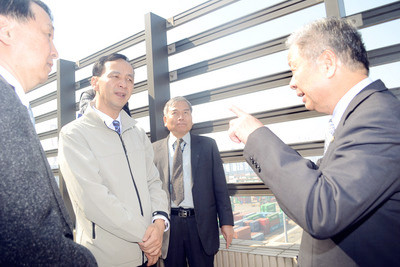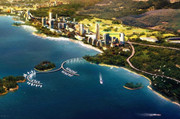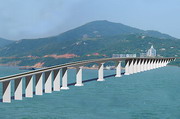Opening a new direct Pingtan-Taipei sea route
( chinadaily.com.cn )
Updated: 2013-03-08
|
|||||||||
 |
|
The mayor of the city of New Taipei, Taiwan, Eric Chu (L2), visits the city's port area on March 7. [Photo provided to China Daily] |
The mayor of the city of New Taipei, Taiwan, Eric Chu, in a visit to the city's port area on March 7, said that he hoped to see a direct marine route between Pingtan, an island county just off the mainland and a part of Fujian province, and the port area of Taipei, according to Taiwan media.
In a response to Chu's remark, the port authorities noted that conditions were ripe for a direct route between the two and that it could go into operation as early as April. The first direct cross-Straits ferry, the Haixia, began operating at the end of 2011, and Taiwan has seen an impressive increase in the number of tourists and businessmen coming from the mainland. Now, this new route from Pingtan is expected to ease the burden on the Haixia and push the development of Taipei's port area as a free economic demonstration zone, as well as the nearby entertainment zone, the Taiwan media reported.
The distance between Taipei Port and Pingtan is 80 nautical miles and takes about three hours by high-speed ship. The public transportation department of New Taipei has said they are working on schedules for the new route, and that both Taiwan and Pingtan hope to integrate the boat trip with high-speed train service at both ends to give travelers total port-to-train shuttle services.
Meanwhile, an application has been filed for a 10,000-ton high-speed liner with a capacity of 700 people, to provide a shuttle service between Taipei Port and Pingtan, according to a Taiwan International Ports Corp representative.
If the liner gets its approval from both ends, it could be sailing by April. At the same time, other direct routes between Taipei and other Fujian cities, such as Xiamen and Fuzhou, the provincial capital, are under consideration.
Edited by Chen Zhilin and Roger Bradshaw






